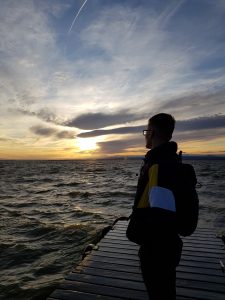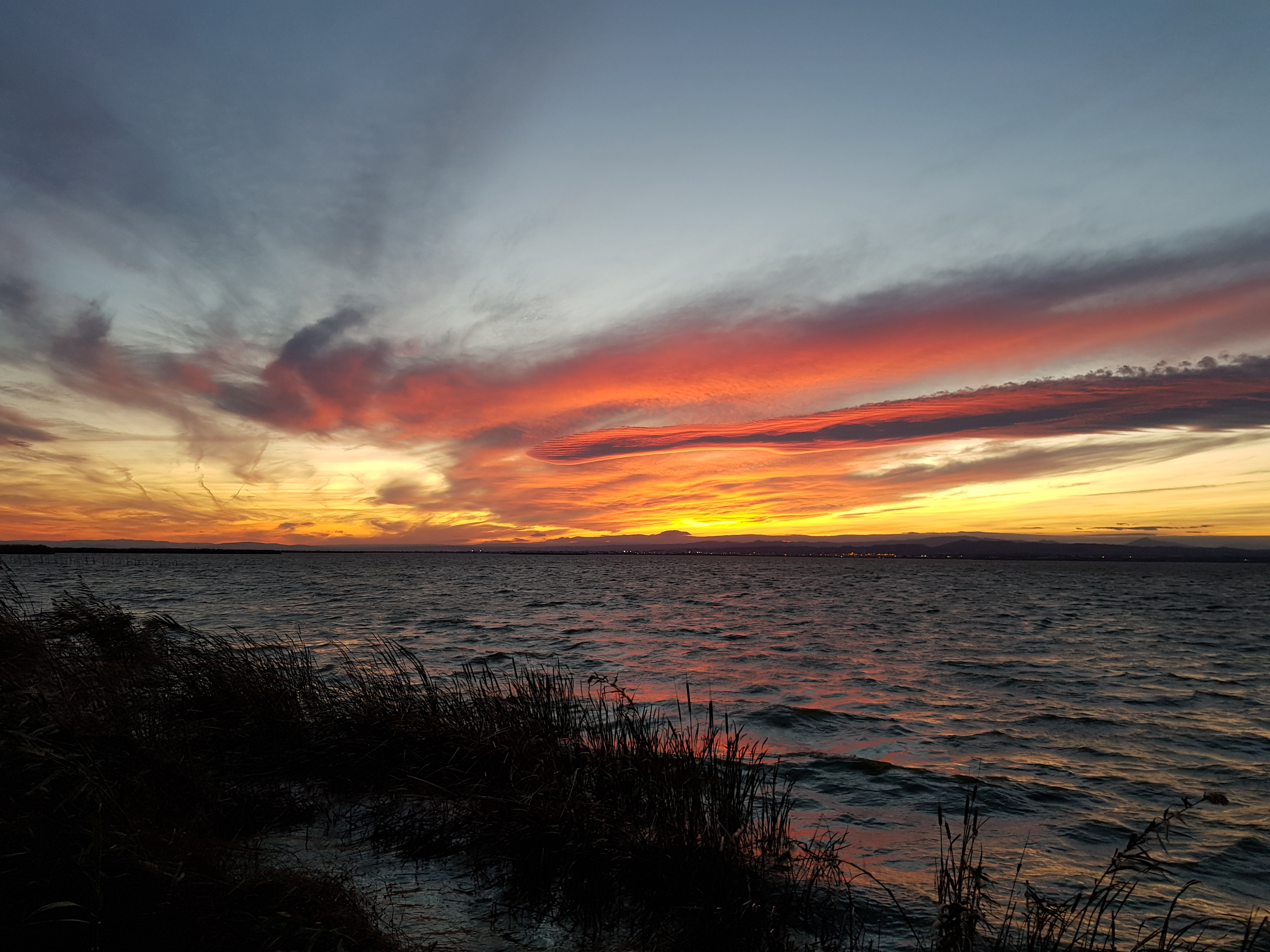
La Albufera refiere a una gran reserva natural en Valencia. Hace poco menos de 2 millones de años se formó, durante el pleistoceno. Se formó por el cierre del golfo existente entre Valencia y la actual población de Cullera, más o menos unos 30 kilómetros de distancia de norte a sur, con los sedimentos del río Turia y de las corrientes marinas, que de norte a sur arrastraban estos sedimentos acumulándolos. Ese cierre formó el actual cordón litoral de la Dehesa del Saler. Restos marinos recogidos en su fondo, demuestran la primitiva abertura al mar. Una vez cerrado, el lago se alimentaba del agua de los rios Turia y Júcar, y se comunicaba con el mar por 3 puntos, hoy “golas” o canales. Se calcula que el tamaño de aquel lago podria ser de unas 30.000 hectáreas. Hoy en dia, el lago ha encogido en tamaño y por eso el tamaño se calcula en alrededor de 2.000 hectáreas. A lo largo de la historia, esta zona ha sido muy importante para los lugareños y ciudadanos de Valencia de manera que el lago los ha proporcionado comida y trabajo. La Pesca se reconoce legalmente desde el año 1250, cuando un grupo de habitantes del entonces poblado de Russafa (hoy barrio de Valencia) se traslada e instala a la isla de El Palmar para poder pescar más fácil y cómodamente. Poco después esta legalidad se reconoce en las poblaciones de Silla y Catarroja. El cultivo de arroz es otro uso tradicional, aunque más reciente (desde el siglo XVIII); tiene gran importancia económica y ambiental porque las especies vegetales y animales que han desaparecido del propio lago siguen viviendo en los arrozales (donde se purifica el agua de la laguna). Estos arrozales también proporcionan alimento y refugio a muchas aves. Opuestamente, los reyes y conquistadores que pasaron por la peninsular aprovechaban de la zona para pescar, cazar, y sobre todo divertirse y disfrutar de la calma de la naturaleza. A lo largo de los siglos La Albufera ha sido la propiedad de distintas instituciones y gente de Poder. En 1911, tanto el lago como su dehesa, pasan a ser propiedad de la ciudad de Valencia. Aunque no lo fue definitivamente hasta 1927. A partir de aquel año, se iniciaron las mejoras necesarias en campos como la sanidad, el embellecimiento y la urbanización. El 8 de mayo de 1990 el Parque se incorporó a la Lista de Zonas Húmedas de Importancia Internacional, en la Conferencia de Ramsar. El 32 de mayo de 1993 se incluyen dentro del Parque las poblaciones de Valencia por ejemplo Alfafar, Sedaví etc. El 8 de junio de 1994 se declaró, por la Comunidad Europea, Zona de Especial Protección para las Aves (ZEPA, aves silvestres).
Hoy en día la Albufera se conoce por la producción de la mejor paella del mundo y por su paisaje pasmoso y sus atardeceres inolvidables. Me encantó y es sin duda una de mis memorias favoritas de mi estancia en Valencia.

La Albufera refers to a large nature reserve in Valencia. It was formed, a little less than 2 million years ago, during the Pleistocene. It was formed by the closure of the gulf between Valencia and the current town of Cullera, approximately 30 kilometers from north to south, with the sediments of the River Turia and the sea currents, which carried these sediments from north to south, accumulating them. This closure formed the current coastal range of the Dehesa del Saler. Marine remains collected on its beds show the primitive opening to the sea. Once closed, the lake connected to the water of the rivers Turia and Júcar, and was connected with the sea by three points, today “goals” or channels. It is estimated that the size of the lake at that time could have been about 30,000 hectares. Today, the lake has shrunk in size and so the size is estimated at about 2,000 hectares. Throughout history, this area has been very important to the locals and citizens of Valencia, providing them with food and work. Fishing has been legally recognized since 1250 when a group of inhabitants from the then town of Russafa (today’s neighborhood of Valencia) moved and settled on the island of El Palmar to be able to fish more easily and comfortably. Shortly after, this legality was recognised in the towns of Silla and Catarroja. Rice cultivation is another traditional use, although more recent (since the 18th century); it has great economic and environmental importance because the plant and animal species that have disappeared from the lake itself continue to live in the rice fields (where the water from the lake is purified). These rice fields also provide food and shelter for many birds. Conversely, the kings and conquerors who passed through the peninsula took advantage of the area to fish, hunt, and above all to relax and enjoy the tranquility of the nature there. Throughout the centuries, La Albufera has been the property of various institutions and people of power. In 1911, both the lake and its meadow became the property of the city of Valencia. Although it was not definitively owned until 1927. From that year onwards, the necessary improvements were made in areas such as health, beautification, and urbanisation. On 8th May 1990, the Park was added to the List of Wetlands of International Importance at the Ramsar Conference. On May 32, 1993 the towns of Valencia were included in the Park, for example, Alfafar, Sedaví, etc. On 8 June 1994, the European Community declared the area a Special Protection Area for Birds (SPA, wild birds).
Today the Albufera is known for the production of the best paella in the world and for its breathtaking landscape and unforgettable sunsets. I loved it and my trip there is undoubtedly one of my favourite memories of my stay in Valencia.
